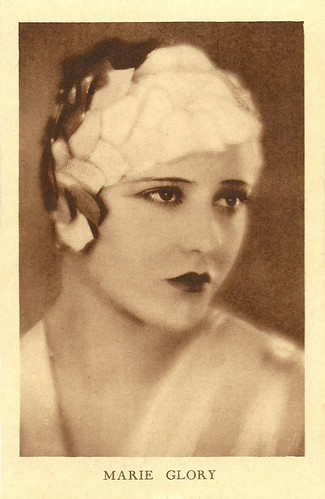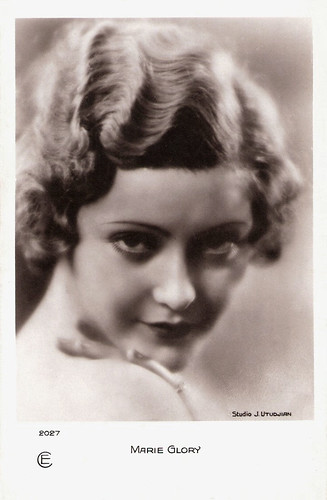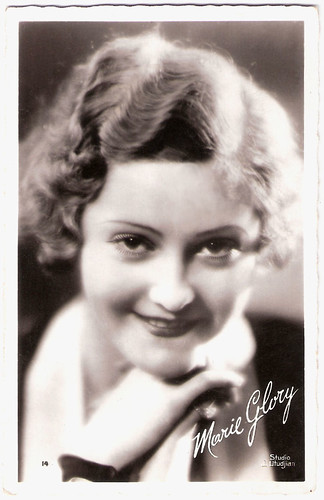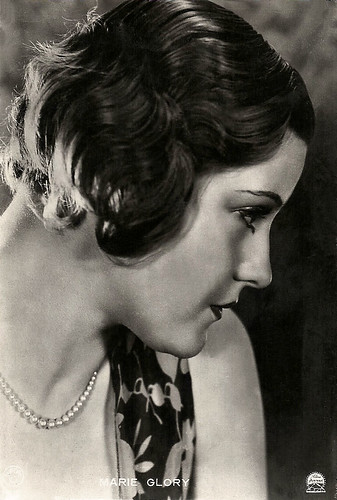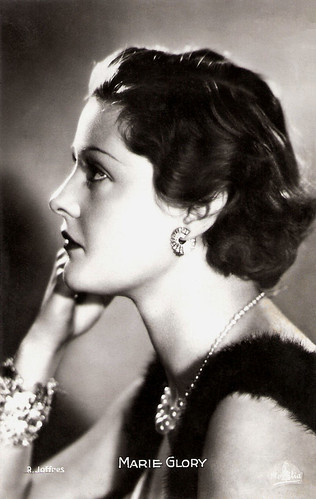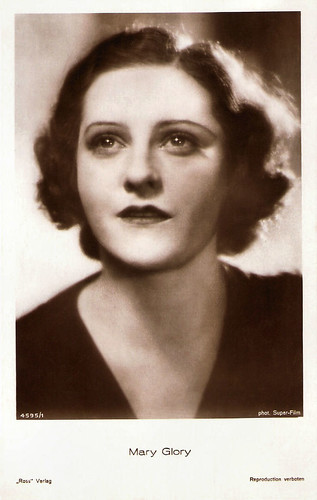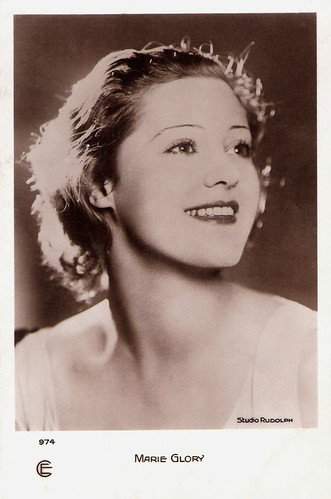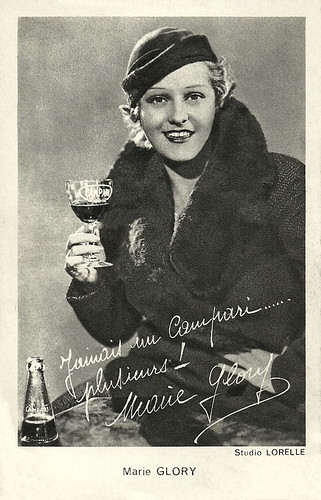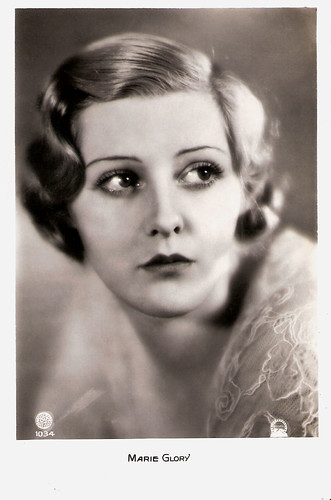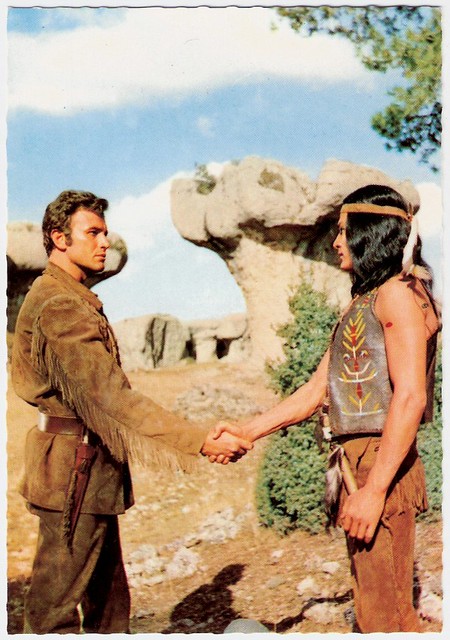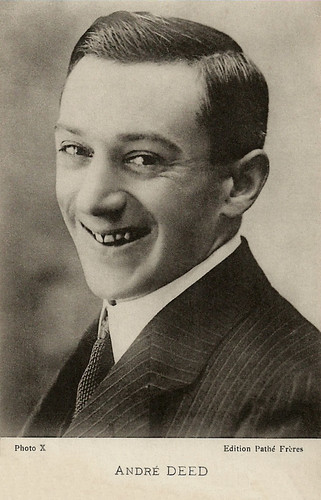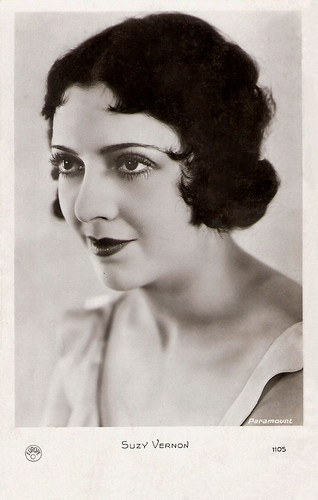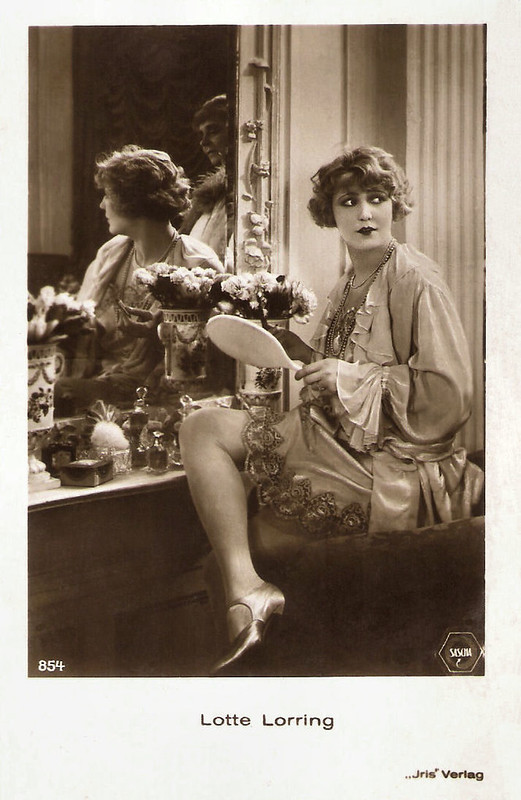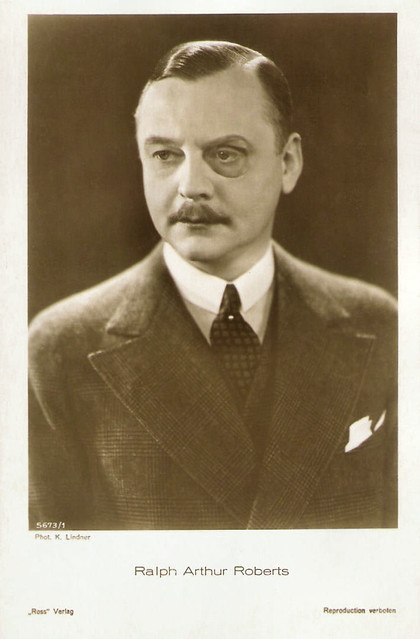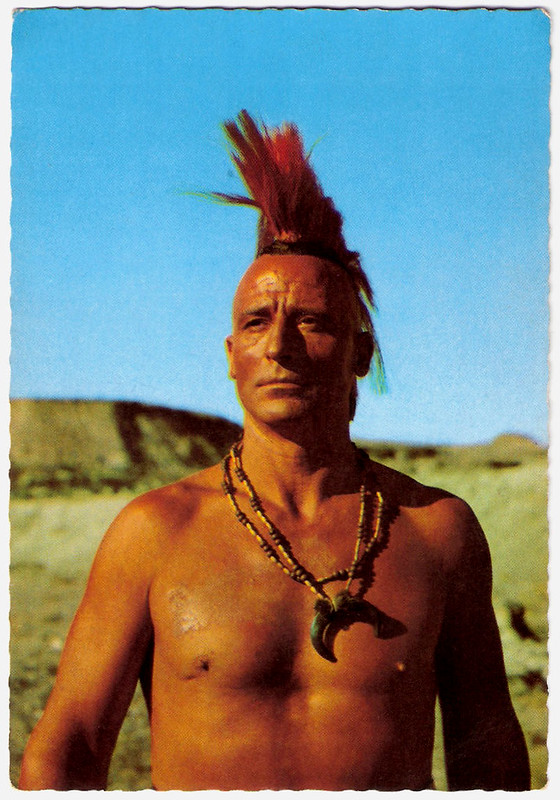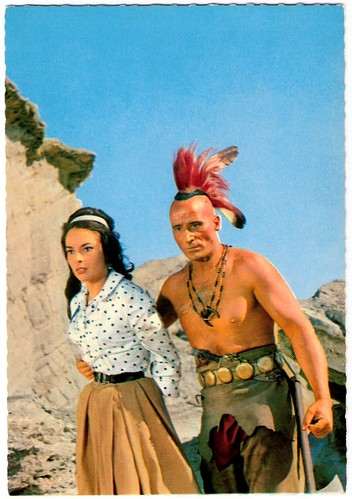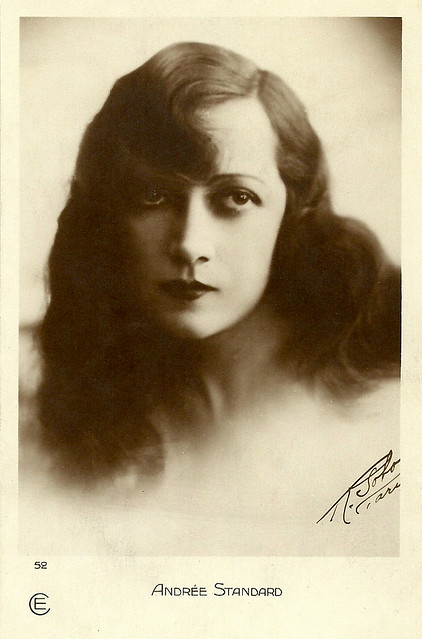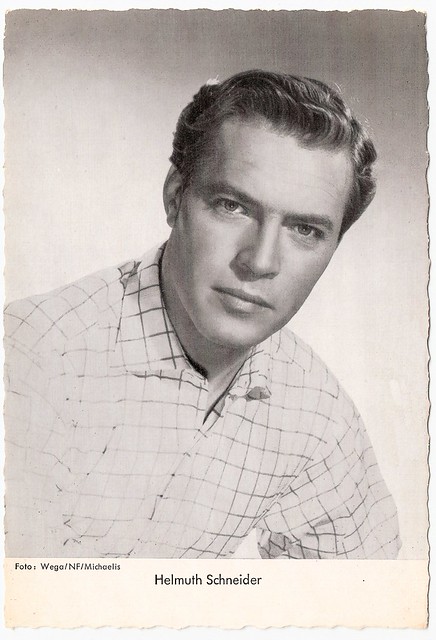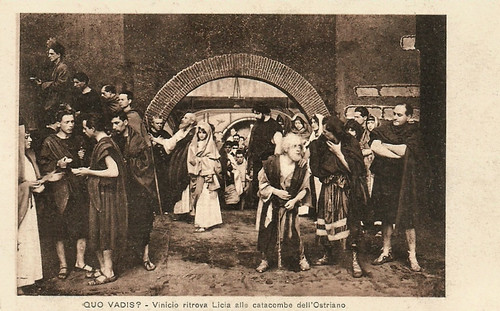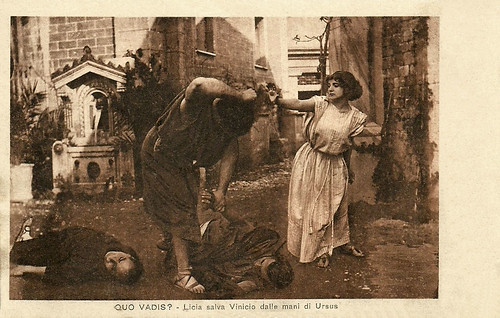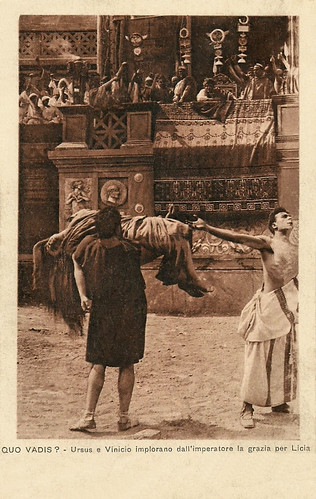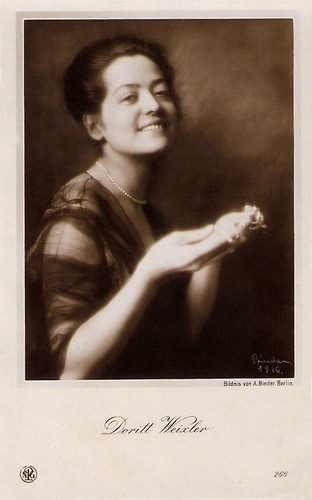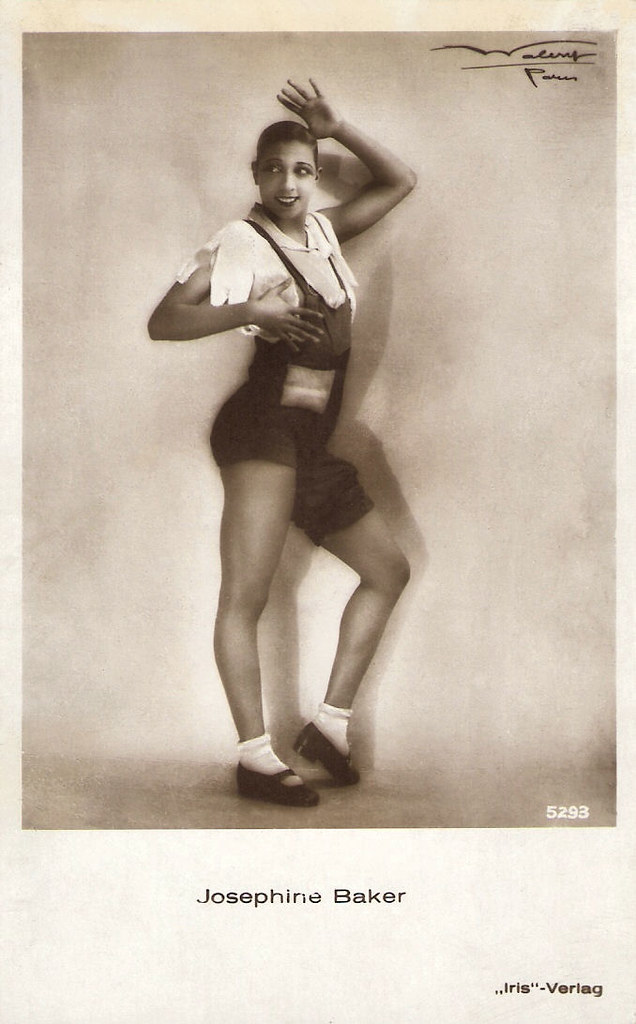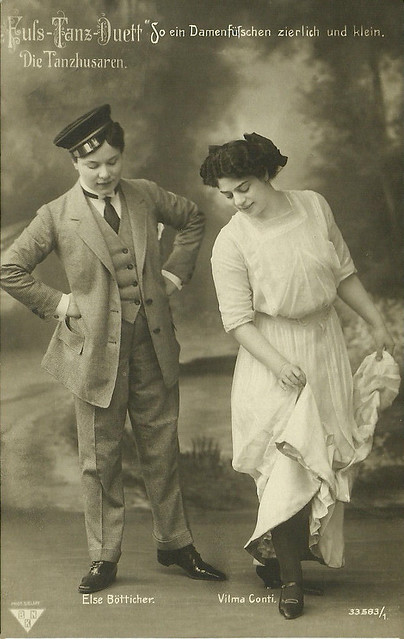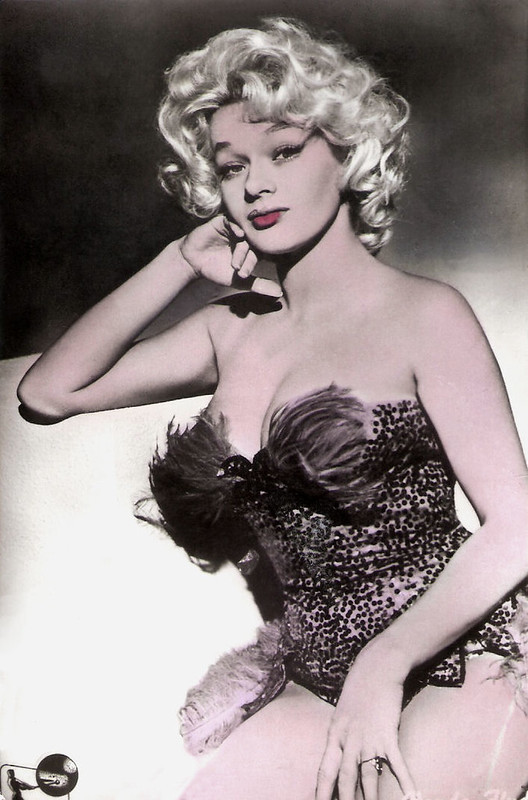Beautiful and seductive French actress Lily Damita (1902-1994) appeared in 33 French, Austrian and Hollywood films between 1922 and 1937. Her marriage with Errol Flynn was tempestuous and led to her nicknames 'Tiger Lil' and 'Dynamita'. In 1970 her only son, Sean Flynn, went missing during the Vietnam war. Lily reportedly invested millions to recover him, but sadly she never found her son back.
![Lily Damita]()
German postcard by Ross Verlag, no. 3150/3, 1928-1929. Photo: F.P.S.
![Lily Damita]()
Austrian postcard by Iris Verlag, no. 980. Photo: Sascha-Film.
![Lily Damita]()
German postcard by Ross Verlag, no. 4767/1, 1929-1930. Photo: Alex Binder, Berlin. Collection: Didier Hanson.
![Lily Damita]()
French postcard by Cinémagazine-Selection, Paris, no. 835.
![Lily Damita]()
Austrian postcard by Iris Verlag, no. 375/2. Photo: Manassé, Wien / Sascha Film, Wien.
![Lily Damita]()
Austrian postcard by Iris Verlag, no. 375/1. Photo: Manassé, Wien / Sascha.
A Life of Mundanity
Lily (also Lili) Damita was born Liliane Marie-Madeleine Carré in Blaye, France (north of Bordeaux), in 1902 (some sources say 1901, 1904 or 1906). She was educated in convents and ballet schools in several European countries, including France, Spain and Portugal. At 14, she was enrolled as a dancer at the Opéra de Paris. By the age of 16 she was performing in popular music-halls, eventually appearing in the Revue at the Casino de Paris under the name Lily Deslys. She also worked as a photographic model. Then a life of mundanity started. When in Biarritz, the Spanish King wanted to be presented to that 'damita dal maillo rojo' (that litte lady in the red bathing costume). Lily liked the compliment so much that she kept her nickname and appeared under the name Damita del Rojo. In 1921 she won a beauty contest by the journal Cinémagazine. The French company Société Cinématographique offered her a role in the silent film La belle au bois dormant/Sleeping Beauty (Stéphane Passet, 1922). She was praised for her beauty and freshness in this film. Soon other French films followed, including the serial L'Empereur des pauvres/The Emperor of the Poor (René Leprince, 1922), La Voyante/The Clairvoyant (Leon Abrams, Louis Mercanton, 1923) with the legendary Sarah Bernhardt, and the drama Corsica (René Carrère, Vanina Casalonga, 1923).
![Lily Damita in Die goldene Schmetterling]()
Italian postcard by Edizione E.F.A., no. 937. Photo: Lily Damita in the Austrian silent film Die goldene Schmetterling (Michael Curtiz, 1926).
![Lily Damita]()
German postcard by Ross Verlag, no. 1232/2, 1927-1928. Photo: Alex Binder, Berlin. Collection: Didier Hanson
![Lily Damita]()
German postcard by Ross Verlag, no. 1658/1, 1927-1928. Photo: Phoebus-Film.
![Lily Damita]()
German postcard by Ross Verlag, no. 3160/2, 1928-1929. Photo: F.P.S.
![Lily Damita & Don Alvarado]()
German postcard by Ross Verlag, no. 4268/1, 1929-1930. Photo: Metro-Goldwyn-Mayer. Lily Damita and Don Alvarado in The Bridge of San Luis Rey (Charles Brabin, 1929). The film was shot both as a silent and a sound film.
![Lily Damita]()
German postcard by Ross Verlag, no. 4497/1, 1929-1930. Photo: Fox.
![Lily Damita]()
German postcard by Ross Verlag, no. 5072/1, 1930-1931.
A Fabulous Offer
Lily Damita went to Vienna to act next to Max Linderin Der Zirkuskönig but left the role to Vilma Banky. Instead she played in Mihaly Kertesz' (the later Michael Curtiz) Das Spielzeug von Paris/Red Heels (1925), which knew a huge international success. At the time, she was reportedly engaged to Prince Louis Ferdinand of Prussia, grandson of the ex-Kaiser. Count Kolowrat, owner of the Viennese Sascha Film, made her a fabulous offer, partly on instigation of the prince: directors to choose by herself, scripts written especially for her, and ways to turn her into one of Europe's biggest film stars. Thus happened. Lily's films may not have reached canonical film history but they were huge hits at the box office. They included Fiaker Nr. 13/Cab Nr. 13 (1926) and Der goldene Schmetterling/The Golden Butterfly (1926), both directed by Michael Curtiz. The latter film, based on a story by P.G. Wodehouse and largely shot in London, probably contained one of Lily's best performances. She and Curtiz married in 1925 and divorced a year later. Damita continued appearing in European productions directed by G. W. Pabst(Man Spielt nicht mit der Liebe/One Does Not Play with Love; 1926), British director Graham Cutts (The Queen Was in the Parlour; 1927), and Robert Wiene (Die Grosse Abenteuerin/The Amateur Adventure; 1928).
![Lily Damita]()
German postcard by Ross Verlag, no. 1953/1, 1927-1928. Photo: EPS.
![Lily Damita]()
French postcard in the Europe series, no. 637. Photo: Union Artistic Films.
![Lily Damita]()
German postcard by Ross Verlag, no. 1676/2, 1927-1928. Photo: A. Binder, Berlin.
![Lily Damita]()
German postcard by Ross Verlag, no. 3160/1, 1928-1929. Photo: Alex Binder, Berlin.
![Lily Damita]()
German postcard by Ross Verlag, no. 4428/1, 1929-1930. Photo: United Artists.
A Siren of the Tropics
After several Hollywood offers, it was MGM mogul Sam Goldwyn who took Lily Damita to California to perform in The Rescue (Herbert Brenon, 1929) with Ronald Colman, and The Bridge of San Luis Rey (1929, Charles Brabin), which were rather tedious. Things went better when Lily played a siren of the tropics in The Cock-Eyed World (Raoul Walsh, 1929) opposite Victor McLaglen. In the meantime, sound cinema had arrived. Lily didn't master English too well, so she was put in French versions of American films before dubbing became normal. She was cast with the young Gary Cooper in the early western Fighting Caravans (Otto Brower, David Burton, 1931), and with the young Laurence Olivierin Friends and Lovers (Victor Schertzinger, 1931). She returned to France and played a young adventuress in On a Vole un Homme/Man Stolen (1933) from the great Max Ophüls. According to Hal Erickson at All Movie, this lighthearted romance was "gorgeously photographed on the French Riviera and other such eye-catching locations". On a Vole un Homme was the first of a brace of films produced in France by Erich Pommer on behalf of Hollywood's Fox Films. In 1935 Lily married an unknown actor who would become Hollywood's biggest box office attraction, Errol Flynn. She reportedly retired without complaints, but their marriage was rather tempestuous, hit the press and finished in a divorce in 1942. In 1970, their only son Sean Flynn, a 28 years old photo journalist for Time Magazine and a dead ringer for his father, went missing in Cambodia during the Vietnam war. He was captured by Khmer Rouge guerrillas. In spite of huge investments by Lily, he was never found and in 1984 he was declared legally dead. Lily married three times, the last time to retired dairy owner Allen Loomis (1962-1983). All three marriages ended in a divorce. In 1994, Lily Damita died of Alzheimer's disease in Palm Beach, Florida, aged 89. In March 2010 media reported that remains, that may be those of Sean Flynn (1941-1970), have been found in a mass grave in Cambodia. Tests were scheduled to be conducted on the jaw and femur bone found and were handed over to the U.S. embassy in Phnom Penh. However, the results, released June 30, 2010 by JPAC, showed the remains were not those of Sean Flynn.
![Lily Damita, Ronald Colman]()
German postcard by Ross Verlag, no. 4029/1, 1929-1930. Photo: United Artists.
![Lily Damita]()
German postcard by Ross Verlag, no. 5517/2, 1930-1931. Photo: Atelier Manassé, Wien (Vienna).
![Lily Damita]()
German Postcard by Ross Verlag, no. 5745/1, 1930-1931. Photo: Paramount. Publicity still for Fighting Caravans (1931).
![Lily Damita]()
French postcard by Ed. Chantal, Paris, no. 613. Photo: Forrester / Parant.
![Lily Damita]()
French postcard by A.N., Paris, no. 647. Photo: Metro-Goldwyn-Mayer.
Sources: Vittorio Martinelli (Le dive del silenzio), Hal Erickson (AllMovie), Helen Kennedy (Daily News), C. Parker (Starlet Showcase), Wikipedia, and IMDb.

German postcard by Ross Verlag, no. 3150/3, 1928-1929. Photo: F.P.S.

Austrian postcard by Iris Verlag, no. 980. Photo: Sascha-Film.

German postcard by Ross Verlag, no. 4767/1, 1929-1930. Photo: Alex Binder, Berlin. Collection: Didier Hanson.

French postcard by Cinémagazine-Selection, Paris, no. 835.

Austrian postcard by Iris Verlag, no. 375/2. Photo: Manassé, Wien / Sascha Film, Wien.
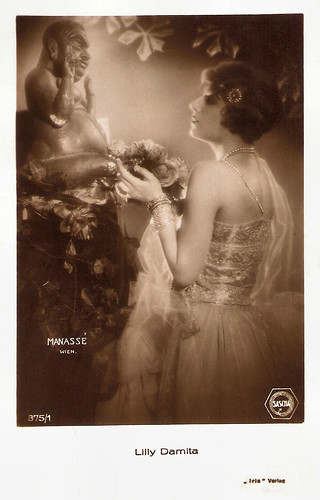
Austrian postcard by Iris Verlag, no. 375/1. Photo: Manassé, Wien / Sascha.
A Life of Mundanity
Lily (also Lili) Damita was born Liliane Marie-Madeleine Carré in Blaye, France (north of Bordeaux), in 1902 (some sources say 1901, 1904 or 1906). She was educated in convents and ballet schools in several European countries, including France, Spain and Portugal. At 14, she was enrolled as a dancer at the Opéra de Paris. By the age of 16 she was performing in popular music-halls, eventually appearing in the Revue at the Casino de Paris under the name Lily Deslys. She also worked as a photographic model. Then a life of mundanity started. When in Biarritz, the Spanish King wanted to be presented to that 'damita dal maillo rojo' (that litte lady in the red bathing costume). Lily liked the compliment so much that she kept her nickname and appeared under the name Damita del Rojo. In 1921 she won a beauty contest by the journal Cinémagazine. The French company Société Cinématographique offered her a role in the silent film La belle au bois dormant/Sleeping Beauty (Stéphane Passet, 1922). She was praised for her beauty and freshness in this film. Soon other French films followed, including the serial L'Empereur des pauvres/The Emperor of the Poor (René Leprince, 1922), La Voyante/The Clairvoyant (Leon Abrams, Louis Mercanton, 1923) with the legendary Sarah Bernhardt, and the drama Corsica (René Carrère, Vanina Casalonga, 1923).

Italian postcard by Edizione E.F.A., no. 937. Photo: Lily Damita in the Austrian silent film Die goldene Schmetterling (Michael Curtiz, 1926).

German postcard by Ross Verlag, no. 1232/2, 1927-1928. Photo: Alex Binder, Berlin. Collection: Didier Hanson

German postcard by Ross Verlag, no. 1658/1, 1927-1928. Photo: Phoebus-Film.

German postcard by Ross Verlag, no. 3160/2, 1928-1929. Photo: F.P.S.

German postcard by Ross Verlag, no. 4268/1, 1929-1930. Photo: Metro-Goldwyn-Mayer. Lily Damita and Don Alvarado in The Bridge of San Luis Rey (Charles Brabin, 1929). The film was shot both as a silent and a sound film.

German postcard by Ross Verlag, no. 4497/1, 1929-1930. Photo: Fox.

German postcard by Ross Verlag, no. 5072/1, 1930-1931.
A Fabulous Offer
Lily Damita went to Vienna to act next to Max Linderin Der Zirkuskönig but left the role to Vilma Banky. Instead she played in Mihaly Kertesz' (the later Michael Curtiz) Das Spielzeug von Paris/Red Heels (1925), which knew a huge international success. At the time, she was reportedly engaged to Prince Louis Ferdinand of Prussia, grandson of the ex-Kaiser. Count Kolowrat, owner of the Viennese Sascha Film, made her a fabulous offer, partly on instigation of the prince: directors to choose by herself, scripts written especially for her, and ways to turn her into one of Europe's biggest film stars. Thus happened. Lily's films may not have reached canonical film history but they were huge hits at the box office. They included Fiaker Nr. 13/Cab Nr. 13 (1926) and Der goldene Schmetterling/The Golden Butterfly (1926), both directed by Michael Curtiz. The latter film, based on a story by P.G. Wodehouse and largely shot in London, probably contained one of Lily's best performances. She and Curtiz married in 1925 and divorced a year later. Damita continued appearing in European productions directed by G. W. Pabst(Man Spielt nicht mit der Liebe/One Does Not Play with Love; 1926), British director Graham Cutts (The Queen Was in the Parlour; 1927), and Robert Wiene (Die Grosse Abenteuerin/The Amateur Adventure; 1928).

German postcard by Ross Verlag, no. 1953/1, 1927-1928. Photo: EPS.

French postcard in the Europe series, no. 637. Photo: Union Artistic Films.

German postcard by Ross Verlag, no. 1676/2, 1927-1928. Photo: A. Binder, Berlin.

German postcard by Ross Verlag, no. 3160/1, 1928-1929. Photo: Alex Binder, Berlin.

German postcard by Ross Verlag, no. 4428/1, 1929-1930. Photo: United Artists.
A Siren of the Tropics
After several Hollywood offers, it was MGM mogul Sam Goldwyn who took Lily Damita to California to perform in The Rescue (Herbert Brenon, 1929) with Ronald Colman, and The Bridge of San Luis Rey (1929, Charles Brabin), which were rather tedious. Things went better when Lily played a siren of the tropics in The Cock-Eyed World (Raoul Walsh, 1929) opposite Victor McLaglen. In the meantime, sound cinema had arrived. Lily didn't master English too well, so she was put in French versions of American films before dubbing became normal. She was cast with the young Gary Cooper in the early western Fighting Caravans (Otto Brower, David Burton, 1931), and with the young Laurence Olivierin Friends and Lovers (Victor Schertzinger, 1931). She returned to France and played a young adventuress in On a Vole un Homme/Man Stolen (1933) from the great Max Ophüls. According to Hal Erickson at All Movie, this lighthearted romance was "gorgeously photographed on the French Riviera and other such eye-catching locations". On a Vole un Homme was the first of a brace of films produced in France by Erich Pommer on behalf of Hollywood's Fox Films. In 1935 Lily married an unknown actor who would become Hollywood's biggest box office attraction, Errol Flynn. She reportedly retired without complaints, but their marriage was rather tempestuous, hit the press and finished in a divorce in 1942. In 1970, their only son Sean Flynn, a 28 years old photo journalist for Time Magazine and a dead ringer for his father, went missing in Cambodia during the Vietnam war. He was captured by Khmer Rouge guerrillas. In spite of huge investments by Lily, he was never found and in 1984 he was declared legally dead. Lily married three times, the last time to retired dairy owner Allen Loomis (1962-1983). All three marriages ended in a divorce. In 1994, Lily Damita died of Alzheimer's disease in Palm Beach, Florida, aged 89. In March 2010 media reported that remains, that may be those of Sean Flynn (1941-1970), have been found in a mass grave in Cambodia. Tests were scheduled to be conducted on the jaw and femur bone found and were handed over to the U.S. embassy in Phnom Penh. However, the results, released June 30, 2010 by JPAC, showed the remains were not those of Sean Flynn.

German postcard by Ross Verlag, no. 4029/1, 1929-1930. Photo: United Artists.

German postcard by Ross Verlag, no. 5517/2, 1930-1931. Photo: Atelier Manassé, Wien (Vienna).

German Postcard by Ross Verlag, no. 5745/1, 1930-1931. Photo: Paramount. Publicity still for Fighting Caravans (1931).
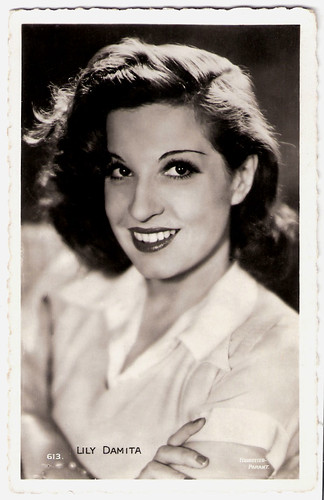
French postcard by Ed. Chantal, Paris, no. 613. Photo: Forrester / Parant.

French postcard by A.N., Paris, no. 647. Photo: Metro-Goldwyn-Mayer.
Sources: Vittorio Martinelli (Le dive del silenzio), Hal Erickson (AllMovie), Helen Kennedy (Daily News), C. Parker (Starlet Showcase), Wikipedia, and IMDb.




























